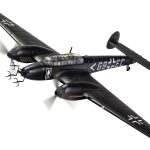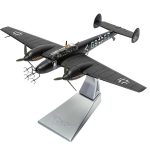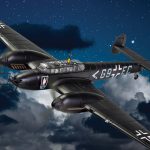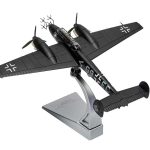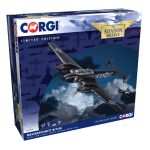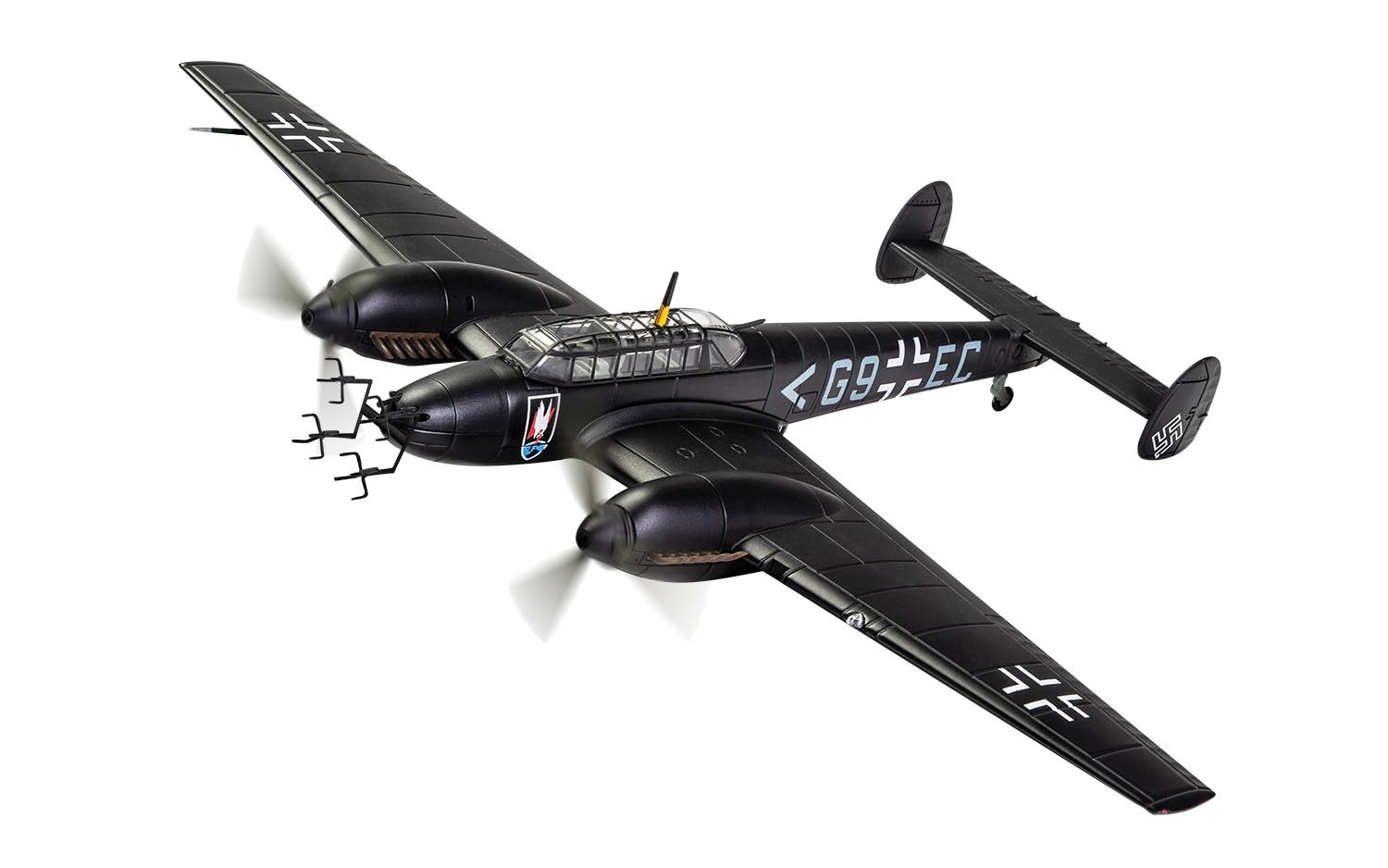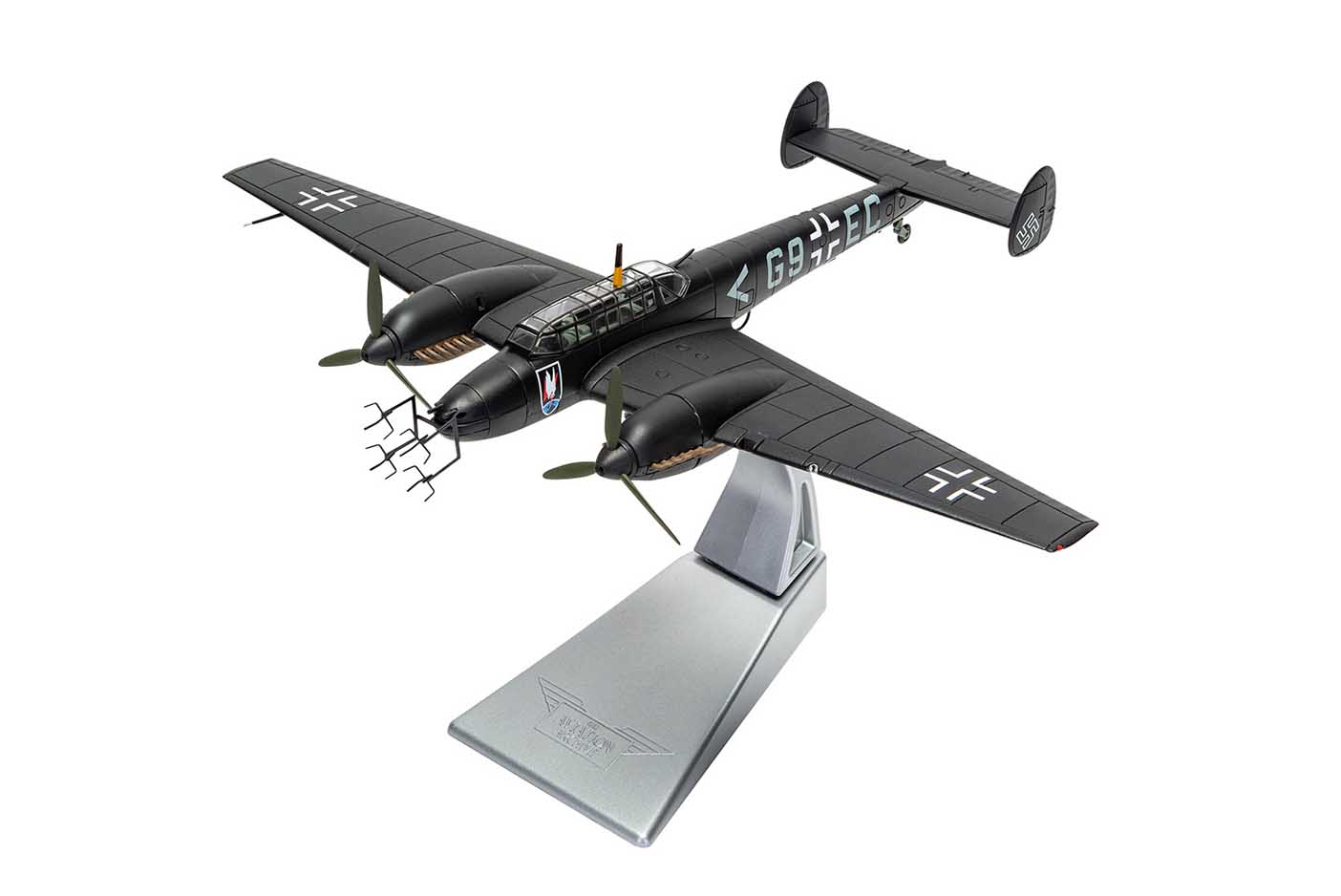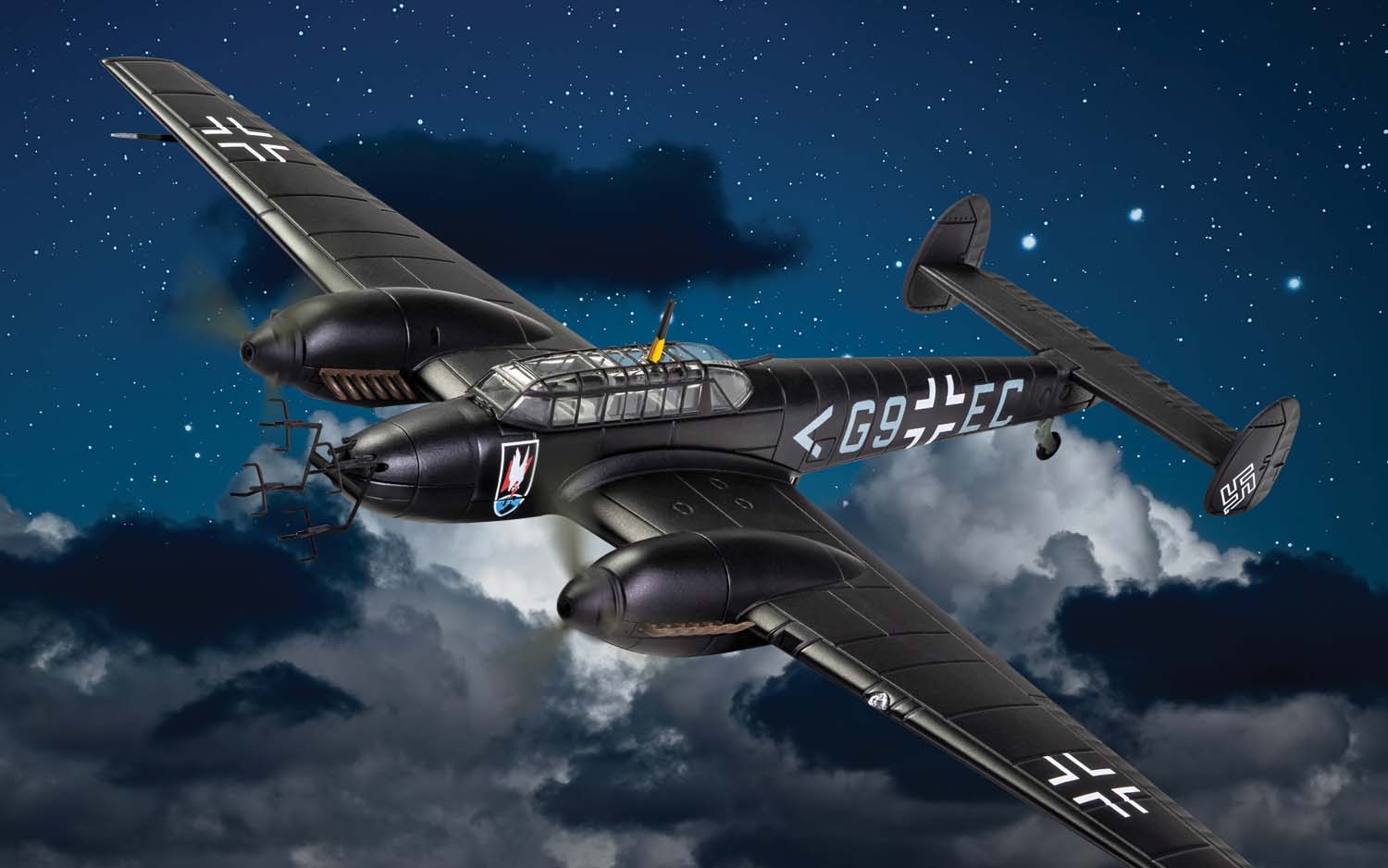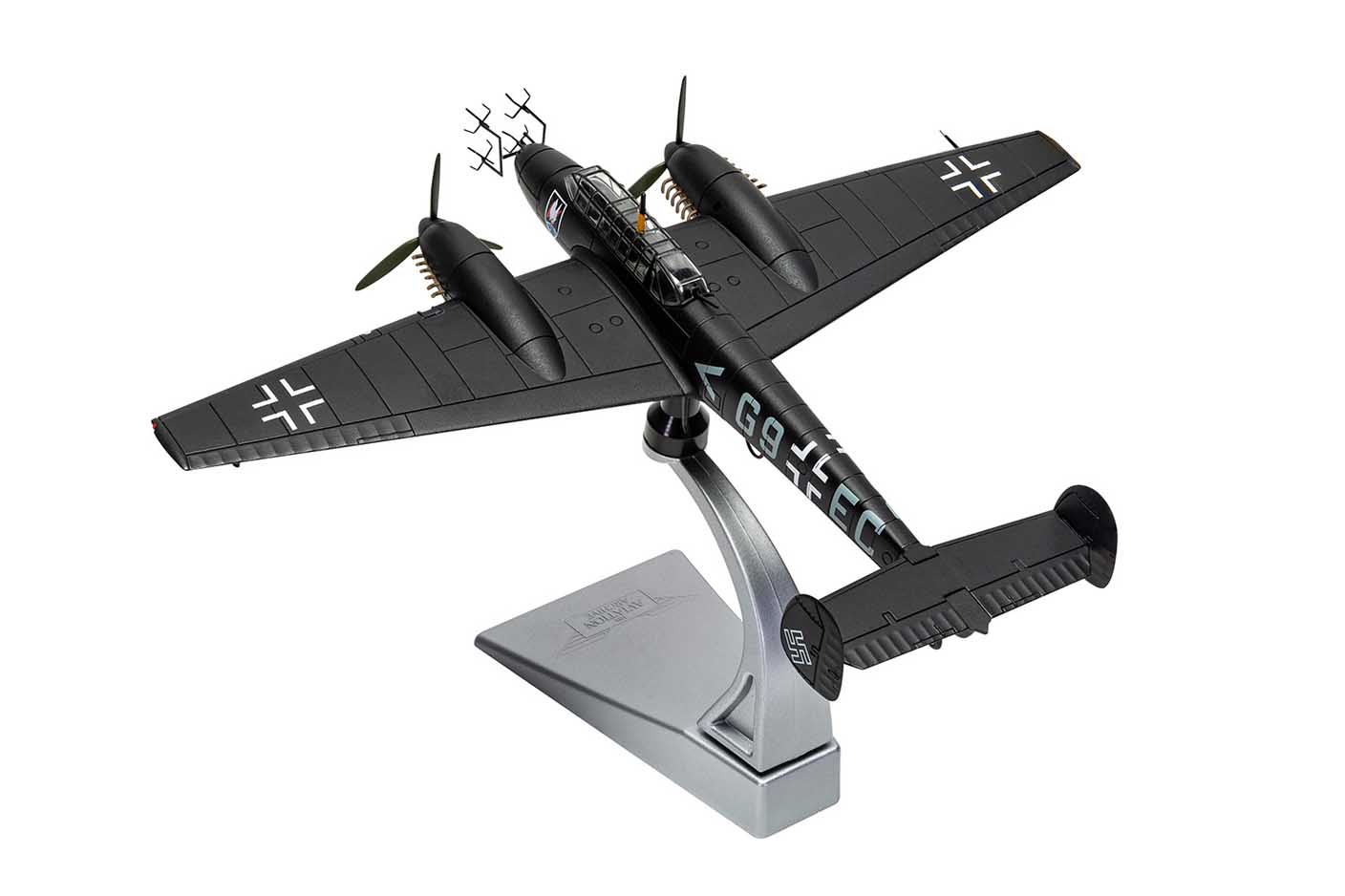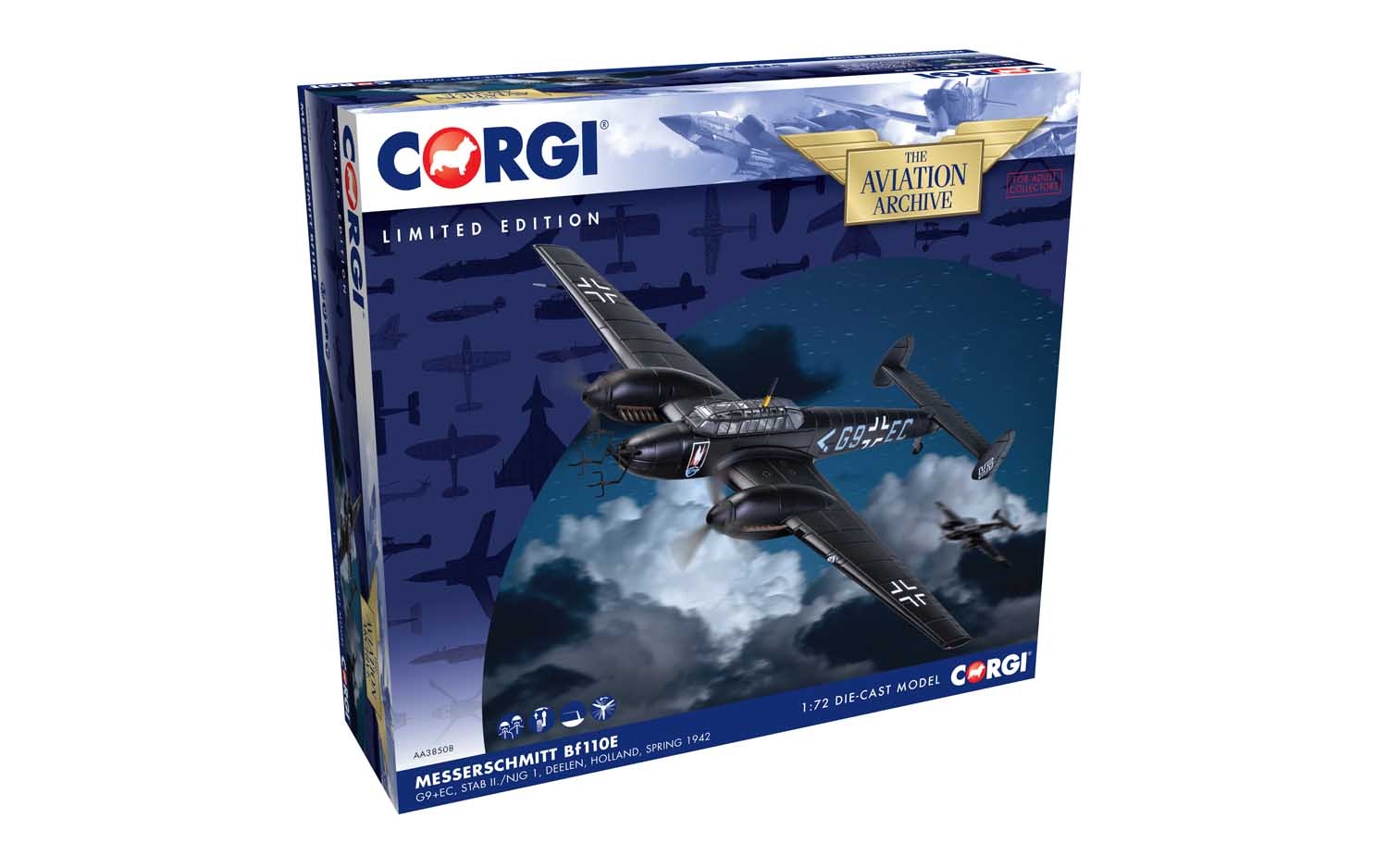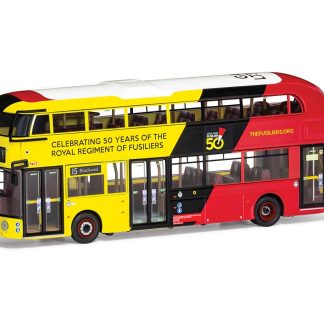Description
The Battle of Britain had proved to be a chastening experience for the Messerschmitt Bf110 heavy fighter units of the Luftwaffe, but despite their disappointing performance against the fighters of the RAF, Messerschmitt fighting twin would go on to perform effectively in other theatres. Seeing extensive service on the Eastern Front, North Africa and the Mediterranean, the extra range and firepower possessed by the Bf 110 helped it to live up to its pre-war reputation, especially when not facing effective fighter opposition. It would however, be night operations against RAF Bomber Command which proved to be the aircraft's most suited operating environment, especially when equipped with the latest air interception radar equipment available to the Luftwaffe.
With many of the world's most successful nightfighter aces perfecting their skills whilst flying the Bf 110, this would become an important aircraft in the nocturnal struggle against the hundreds of RAF bombers crossing the coast of Northern Europe each night. This sinister looking all-black Nachtjagdgeschwader 1 Messerschmitt Bf110E is equipped with the early FuG 202 Lichtenstein B/C air interception radar, which was introduced during 1942 and featured the complex Matratze aerial antenna array on the nose of the aircraft. The radar operator in the rear cockpit would use a pair of oscilloscopes to help him direct his pilot to a possible interception.

